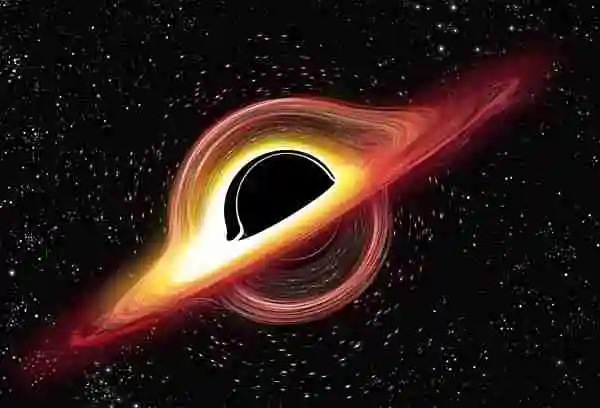Speed of Light: A Comprehensive Guide

Light, the fastest known thing in the universe, is responsible for our ability to see and understand the world around us. The speed of light is not only a fundamental constant of nature but also plays a crucial role in physics, astronomy, and modern technology. This article will explore the history of the speed of light, its significance in the field of physics, and its applications in our everyday lives.
The History of the Speed of Light
The speed of light has been the subject of curiosity and investigation for centuries. Throughout history, many scientists and researchers have attempted to measure and understand this fascinating phenomenon.
Galileo‘s Attempt
In the early 17th century, Italian scientist Galileo Galilei tried to determine the speed of light by conducting an experiment involving lanterns and an assistant. Though his attempt was unsuccessful, it laid the groundwork for future studies on the speed of light.
Ole Rømer’s Discovery
In 1676, Danish astronomer Ole Rømer made a groundbreaking observation by measuring the speed of light indirectly. He studied the motion of Jupiter’s moon Io and noticed discrepancies in its orbit, which he attributed to the finite speed of light.
Albert A. Michelson’s Measurement
American physicist Albert A. Michelson made a more accurate measurement of the speed of light in 1887. Using an interferometer, he measured the speed of light in a vacuum to be approximately 299,796 kilometers per second.
The Constant Speed of Light
The speed of light is an essential constant in physics and has different values depending on the medium through which it travels.
The Speed of Light in a Vacuum
The speed of light in a vacuum is approximately 299,792,458 meters per second (m/s). This value is considered a universal constant and is denoted by the letter “c.”
Speed of Light in Different Media
When light travels through different media such as air, water, or glass, its speed decreases. For example, the speed of light in air is about 299,702 km/s, while in water, it drops to approximately 225,000 km/s.
Special Relativity and the Speed of Light
In 1905, Albert Einstein published his groundbreaking theory of special relativity, which has the speed of light as one of its central principles.
Time Dilation
According to special relativity, time appears to slow down for an object moving at a significant fraction of the speed of light. This phenomenon, known as time dilation, means that an astronaut traveling at near-light speeds would age slower than people on Earth.
Length Contraction
Another consequence of special relativity is length contraction, which states that the length of an object in motion decreases as it approaches the speed of light. This effect is only noticeable at speeds close to the speed of light and is imperceptible at everyday velocities.
Mass-Energy Equivalence
Einstein’s famous equation, E=mc², relates energy (E) to mass (m) and the speed of light (c). This equation demonstrates that a small amount of mass can be converted into an enormous amount of energy, and it is the foundation of nuclear energy.
The Cosmic Speed Limit
The speed of light is considered the ultimate speed limit in the universe, with far-reaching implications for space travel and the nature of reality.
Faster-than-Light Travel
The laws of physics, as we currently understand them, prevent any object with mass from reaching or exceeding the speed of light. Attempting to accelerate an object to the speed of light would require an infinite amount of energy.
Wormholes and Warp Drives

Scientists have theorized about ways to circumvent the cosmic speed limit using hypothetical constructs like wormholes or warp drives. These ideas, while fascinating, remain purely theoretical and face significant scientific and engineering challenges.
The Speed of Light and Modern Technologies
The speed of light plays a vital role in various modern technologies, from telecommunications to global positioning systems.
Telecommunications
Fiber-optic cables transmit information using pulses of light, enabling high-speed data transfer over long distances. The speed of light sets the fundamental limit on how quickly information can be transmitted and received.
GPS Systems
Global Positioning System (GPS) satellites rely on the speed of light to accurately determine a user’s location on Earth. By measuring the time it takes for a signal to travel between the satellite and a GPS receiver, the system can calculate the distance between them.
Conclusion
The speed of light is an essential constant in our universe, shaping our understanding of physics, astronomy, and technology. From its historical measurement to its role in special relativity and modern applications, the speed of light continues to intrigue and inspire scientists and laypeople alike.
FAQs
1) What is the exact speed of light in a vacuum?
The speed of light in a vacuum is approximately 299,792,458 meters per second.
2) Why is the speed of light considered the cosmic speed limit?
The speed of light is the cosmic speed limit because, according to the laws of physics, it is impossible for an object with mass to reach or exceed this speed. Doing so would require an infinite amount of energy.
3) Can anything travel faster than light?
As per our current understanding of physics, nothing with mass can travel faster than light. Some subatomic particles, like neutrinos, can travel close to the speed of light but never exceed it.
4) What is the significance of the speed of light in Einstein’s theory of relativity?
The speed of light is central to Einstein’s theory of special relativity, which explains phenomena like time dilation, length contraction, and mass-energy equivalence.
5) How does the speed of light impact modern technologies like telecommunications and GPS?
The speed of light sets the fundamental limit on how quickly information can be transmitted in telecommunications systems, such as fiber-optic cables. In GPS systems, the speed of light is crucial for accurately determining distances and locations on Earth.





Leave a Reply